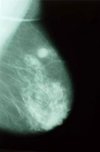Neoplasia 3: Molecular Basis Flashcards
what are the 8 steps that lead to the essential alteration that lead to malignant transformation?
- cell begins making its own growth signals
- cell becomes insensitive to growth inhibition signals
- cellular metabolism altered
- apoptosis is evaded
- limitless replication
- sustained angiogenesis
- ability to invade (metastasize)
- immunity evasion
what is the Warberg effect?
cancer cells keep a high glucose uptake even when in too much presense of O2
What does it mean that cells produce their own growth signals?
it means that cells have proto-oncogenes that get modified into oncogenes in order to make oncoproteins which allows the production of growth factors
what do proto-oncogenes do?
Synthesis of growth factors, growth factor receptors, signal transducers, transcription factors
a mutation of a proto-oncogene will affect what?
- Growth factors
- Growth factor receptors
- Signal transducing proteins
- Transcription factors
- Cyclins & cyclin dependent kinases
give an example of a growth factor?
and a growth factor receptor?
PDGF
PDGFR
give an example of a proto-oncogene?
SIS
what is an example of a mutation that may cause tumor growth factor receptor activation?
point mutations
a point mutation in RET (protooncogene) can be seen in what diseases?
MEN (Multiple Endocrine Neoplasia) type 2A, 2B adn familial medullary carcinoma of the thyroid
a point mutation in c-KIT can be seen in what disease?
GIST (gastroinestinal stromal tumor)
a point mutation in FLT3 gene can be seen in what disease?
myeloid leukemia
a point mutation in RAS can be seen in what disease?
pancreatic adenocarcinoma
through what 3 characteristics do we identify MEN 1?
1) Primary hyperparathyroidism
2) Endocrine tumors of the pancreas
3) pituitary prolactinoma
MEN 2 is subclassified into what 3 syndromes?
1) MEN-2A
2) MEN-2B
3) familial medullary thyroid cancer
what is MEN 2A? (other name)
what symptoms will you see?
sipple syndrome
you will have: pheochromocytoma, medullary carcinoma of the thyroid, and parathyroid hyperplasia
what type of mutation occurs in MEN 2A?
germline gain-of-functoin
a point mutation in ALK gene can be seen in what disease?
lymphomas
in what disease do we see overexpression a gene?
ERBB1 - lung adenocarcinoma
ERBB2 - in breast cancer
what disease is this?

GIST
what is this?

GIST
what is the immunohistochemistry used for GIST?
c-kit (looks brown)

point mutation of what gene familly is the most common type of abnormality involving proto-oncogenes in human tumors?
ras gene
what genes make up the RAS family?
HRAS
KRAS
NRAS
in what cancers is the RAS point mutation the highest (90%)?
pancreatic adenocarcinoma
cholangiocarcinoma





















